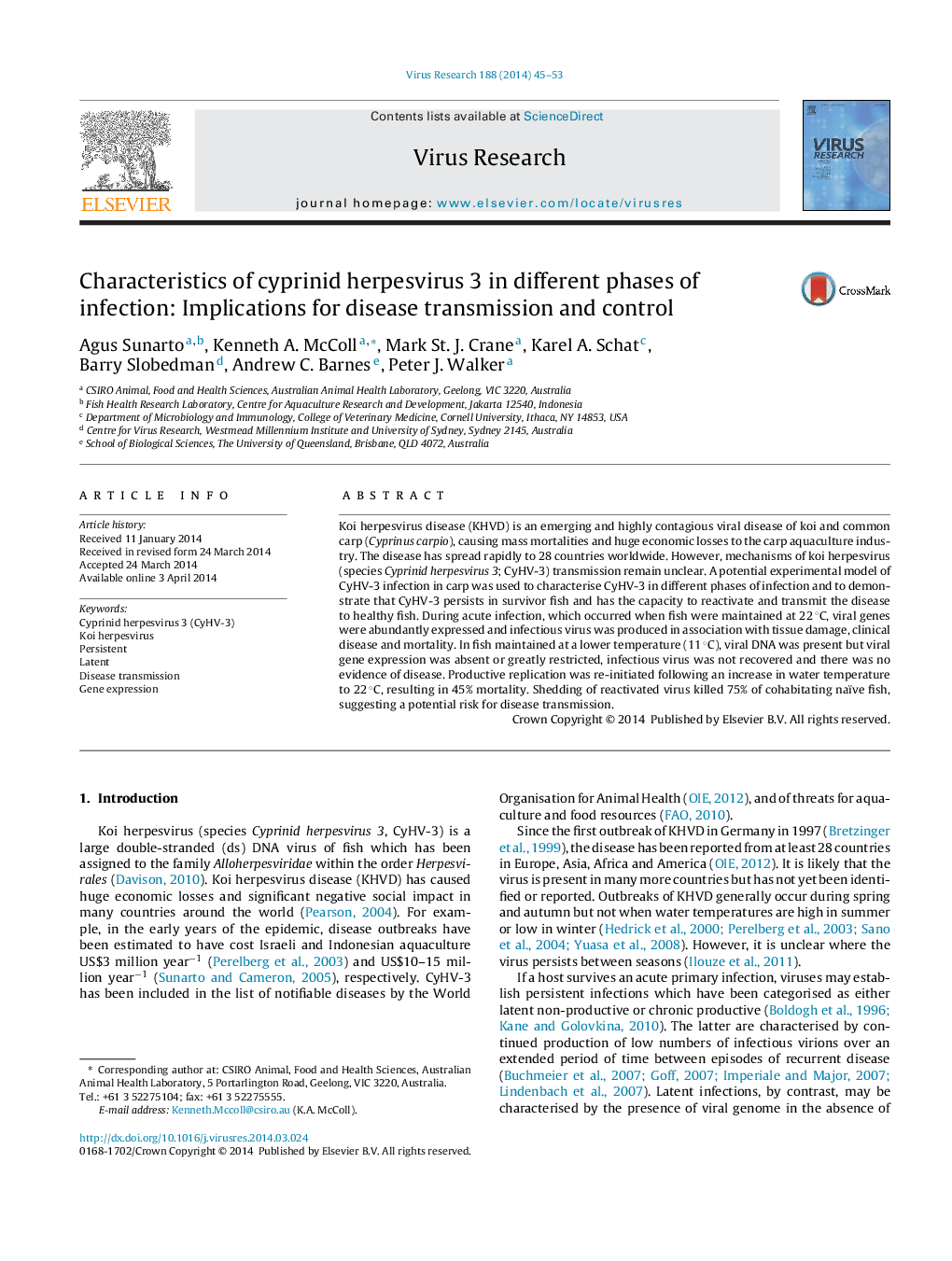| Article ID | Journal | Published Year | Pages | File Type |
|---|---|---|---|---|
| 3428424 | Virus Research | 2014 | 9 Pages |
•We report a potential model of CyHV-3 persistent infection in carp (Cyprinus carpio).•Mortality of infected-fish occurred only during the acute and reactivation phases.•During the persistent phase, viral DNA is present but not viral gene expression.•CyHV-3 persists in survivor fish and has the capacity to reactivate.•Reactivated virus killed 75% of fish, suggesting a risk for disease transmission.
Koi herpesvirus disease (KHVD) is an emerging and highly contagious viral disease of koi and common carp (Cyprinus carpio), causing mass mortalities and huge economic losses to the carp aquaculture industry. The disease has spread rapidly to 28 countries worldwide. However, mechanisms of koi herpesvirus (species Cyprinid herpesvirus 3; CyHV-3) transmission remain unclear. A potential experimental model of CyHV-3 infection in carp was used to characterise CyHV-3 in different phases of infection and to demonstrate that CyHV-3 persists in survivor fish and has the capacity to reactivate and transmit the disease to healthy fish. During acute infection, which occurred when fish were maintained at 22 °C, viral genes were abundantly expressed and infectious virus was produced in association with tissue damage, clinical disease and mortality. In fish maintained at a lower temperature (11 °C), viral DNA was present but viral gene expression was absent or greatly restricted, infectious virus was not recovered and there was no evidence of disease. Productive replication was re-initiated following an increase in water temperature to 22 °C, resulting in 45% mortality. Shedding of reactivated virus killed 75% of cohabitating naïve fish, suggesting a potential risk for disease transmission.
